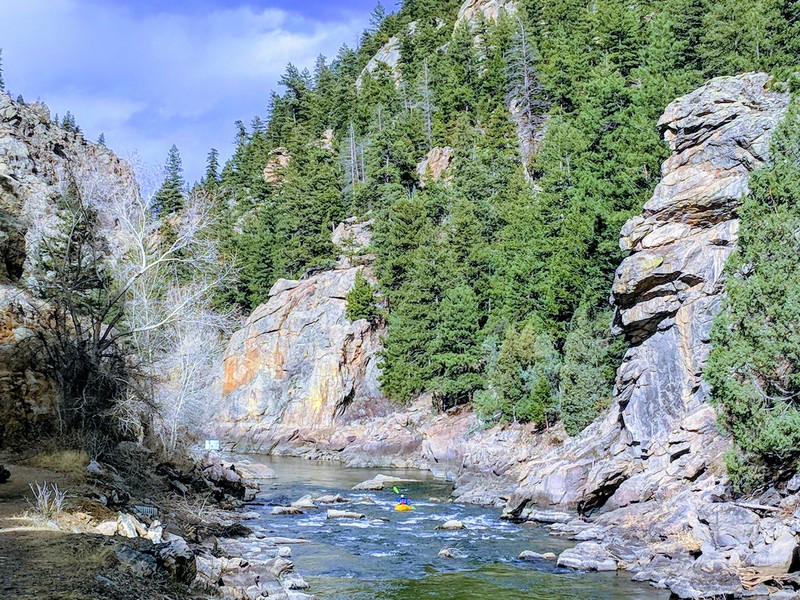Waterton Canyon
Class III+
General Information
- American Whitewater Page : South Platte -- Waterton Canyon
- This scenic section of river is a perfect playground for an intermediate front range packrafter. It often can have runnable flows from March all the way into October, and it is only around 1 hour from Denver. I have packrafted it everywhere between 220 and 1,200 cfs. At all flows, it is a pretty difficult section, and I can attest, that it certainly is not the place for beginners.
- Although this section of river is very short, at only around one mile, it packs four main rapids into this stretch. The last 3 all fall into the final 1/3 of the mile, which makes for a great spot to hang out and run some laps.
- There is no road for a shuttle, but there is a nice wide trail that can be used to hike back. It also allows you to scout the entire run from the path.
Rapids
- S-Turn - This is a very long rapid, that lasts about half of the length of the entire run. It is mostly read and run wave trains and holes, but as the flow gets higher, it can be difficult to rescue someone without them swimming the entire runout.
- Green Bridge - This is the very noticeable horizon line that you will see after the non-stop action of S-Turn finally subsides into a small pool at most flows. It can be seen at 1:20 in the video below. Beware of the rebar in the middle of the river. The easiest line is to enter far river left.
- Avalanche Rapid - This rapid is named after the fact that it's where a rockslide has tumbled into the river from river right. You can distinguish it by the large boulder that splits the river in half. It is generally run on river right, as the left side has an exposed rock that can pin you and flip you pretty easily at most flows.
- Vertical Blender - The final rapid before the takeout at the resevoir is a short but good one. At higher flows, the hole at the bottom can be very powerful.
Optimal Flow levels
- Low flow - Below 350 cfs, the run is technical, boney and filled with sharp, exposed rocks.
- Med flow - As the flow starts to move above 500, the current really picks up and it starts get a little more pushy. The entire run is fairly committing, and at flows above 700 especially, it can be difficult to catch eddies, or to rescue a swimmer. The current moves fast, and the rapids are pretty continuous at that level.
- High flow - Over 1,000 cfs the holes start to become very powerful, especially on Vertical Blender. I had my packraft stuck in the entrance drop for over half an hour one time. At these flows, the current will easily carry any lost gear out into the resevoir where it may not be recoverable.
Photos
Video Footage
I am only relaying my experiences and in no way am I giving you advice on what is safe. Every person ultimately must be responsible for themselves. Do your own research and be honest with yourself about your abilities.
